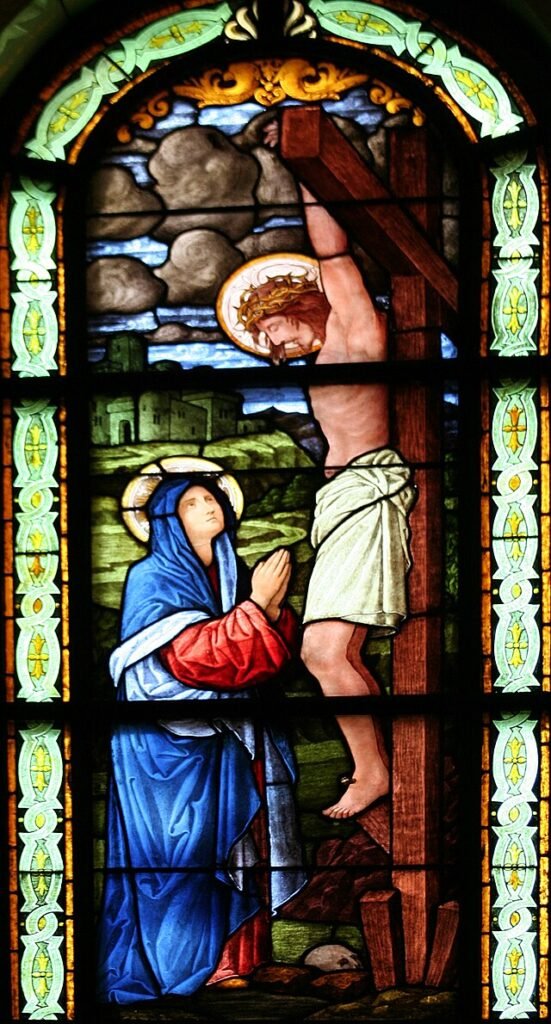From the Servite magazine, “Queen of the Missions” (June-July 1955 Edition), and TV Scripts of “Behold Thy Mother”
Studying the Mystery of the Incarnation Leads to Contemplation of the Cross and Jesus Crucified
What is the greatest event in history? The Incarnation. That God became man is, as St. Bernard called it, “the affair of the centuries.” That a man should be God exhausts even divine power. Higher than that not even Almighty God could raise a man.
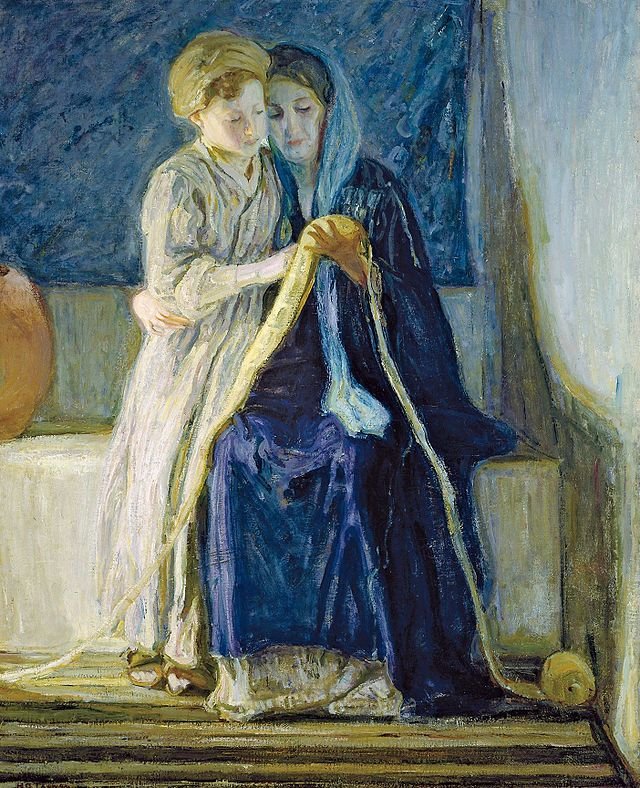
And what is the supreme aspect of the Incarnation? The Passion, Crucifixion, and Death of this Incarnate God. In the last hours before the death of Jesus on the Cross are culminated all the supremacies of Christianity: Redemption, divine love, Holy Mass, the Sacred Heart, etc. Therefore, one cannot long study Jesus, or meditate upon Him, or love Him, without arriving at the Cross. All contemplation of Him comes to rest in the Cross and in Jesus Crucified. He Himself revealed that to us when He said, “And I, if I be lifted up from the earth, will draw all men to Myself.” (John 12:32). When God the Father prophesied the same centuries before the Incarnation, through the prophet Isaias, He put these words into the mouth of Jesus: “Be converted to Me, and you shall be saved, all ye ends of the earth.” (Is. 45:22).
Jesus Crucified, as the Central Point of Our Life, Should be Studied in Union With Mary
The Sacred Passion of Christ is not only the supreme event of all history; it is likewise the most significant fact in the personal life of each individual. It is the whole of Christian asceticism. Everyone will ultimately live or die according to his acceptance or rejection of Divine Redemption. The Sacred Passion of Jesus will be eternally glorified in every intellectual creature: either in God’s mercy or in His justice; either in heaven or in hell.
Since the Crucifixion is the most important of all realities in the personal life of every man and woman, it follows that a knowledge of this culminating mystery of the Incarnation is the grave concern of us all. Earnest Christians will make the mystery of the Crucifixion the object of their daily meditation. And what is the most effective method of studying the Sacred Passion? What is the surest and safest approach to Jesus Crucified? The answer is to be found in that ancient, ascetic truism: “To Jesus through Mary.”
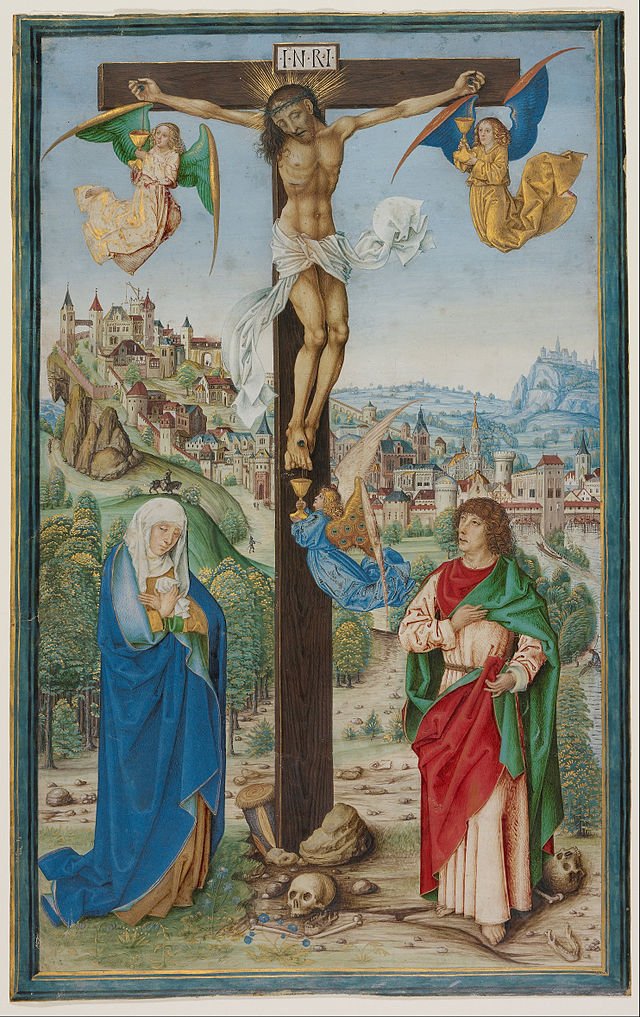
No one can err by taking the Marian road to Jesus — in any of His manifestations. Where Mary is, there is Jesus. God Himself revealed that to us in the Bible when He said of the Magi that “they found the Child with Mary His Mother.” (Matt. 2:11). And it is there that everyone must find Him. The best way to study the mysteries of the Sacred Passion, therefore, is through her who understood them best — His Sorrowful Mother. No Christian tradition is more sound than this: that the contemplation of the Sorrows of Mary is the most effective approach to the sufferings of Jesus. She who gave Him the power to die is best qualified to conduct us through the veils surrounding that staggering mystery of “the God Who died to prove He could not die.”
As Co-Redemptrix, Mary Actively Cooperated With Christ in Our Salvation
Mary was more than just a spectator at Calvary’s drama of the Cross; she was an active participant. The part she played is called by theologians “the Co-Redemption,” which is taken to mean, broadly speaking, “an active cooperation in man’s Redemption.” Hence her title, “Co-Redemptrix,” which would be more or less the same as “a cooperating redeemer.”
There is, however, a gigantic difference between Redemption and Co-Redemption. Even when Mary’s cooperation is admitted, Christ remains the one and only Redeemer. The redemptive action of Christ is primary, essential, independent, absolutely universal – and absolutely necessary. The Co-Redemption (a.k.a. – the “cooperative action of Our Lady”) is secondary, subordinated, only relatively universal, and only hypothetically necessary.
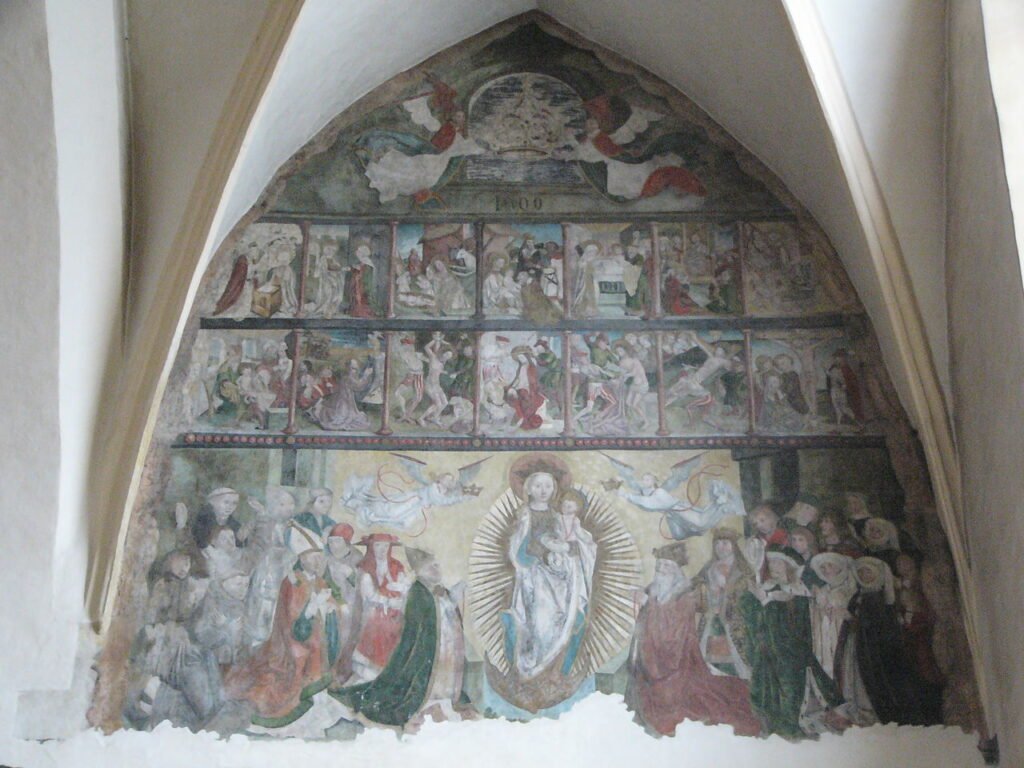
We say that the cooperation of our Blessed Mother in the Redemption was “only relatively universal” because it did not extend to herself. She, too, had to be redeemed by Christ; redeemed, however, in such a way by the unique and anticipatory prerogative of her Immaculate Conception. And we say that her cooperation was “only hypothetically necessary,” because it was based on the hypothesis that God Himself chose to make it necessary. Or, to put it another way: Jesus Christ alone redeemed us, but He made the whole Redemption contingent upon Mary. Although it is obvious that God has no need of this cooperation of Mary, a mere creature like us, it should be equally obvious that He could have decreed such a hypothetically necessary cooperation if it so pleased His Divine Will.
As With Jesus’ Passion, Mary’s Dolors Have Special Significance
Anyone who accepts the Bible must accept the importance of Mary’s sorrows. Those sorrows were launched by the Bible itself, starting with the great prophecy in the temple, where Simeon said to Mary: “And thy own soul a sword shall pierce.” (Luke 2:35). The Bible likewise immortalizes the consummation of those unparalleled sorrows when it says: “Now there stood by the Cross of Jesus, Mary His Mother.” (John 19:25).
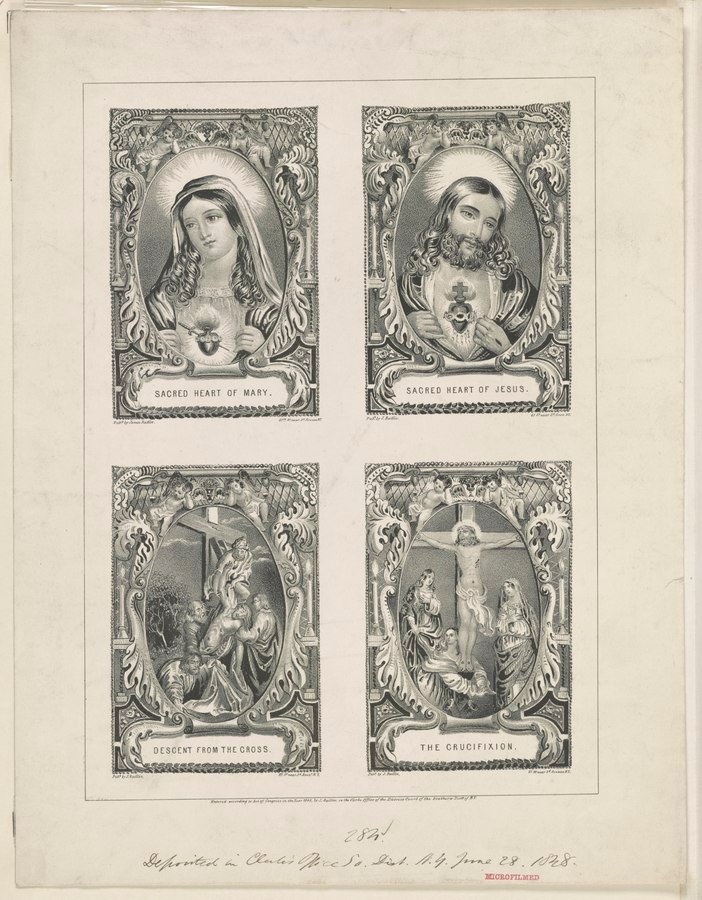
There are countless principles of Christian asceticism and Marian devotion which flow from our Blessed Mother’s uniquely intimate association with the Sacred Passion of her Divine Son. For instance:
1) It is basically because of her Co-Redemption that the Mother of Jesus is the spiritual Mother of angels and of men.
2) It is because Christ is “the Man of Sorrows,” as foretold by the prophet Isaias, that the Virgin Mother — also foretold by Isaias — is “the Woman of Sorrows.”
3) It is because Jesus, nailed to the Cross, is “the King of Martyrs” that the Biblical Woman at the foot of the Cross is “the Queen of Martyrs.”
4) It is because She is history’s most perfect reflection of Jesus Crucified that Mary is “the Queen of all Saints.”
5) It is in her transfixed Immaculate Heart alone that men can see faultlessly mirrored the divine solution to the problem of human pain and suffering — the pierced Sacred Heart of Jesus.
As the Mother of Sorrows, Our Lady is also the Queen of Martyrs
From all eternity Our Lady was destined to be the “Queen of Martyrs.” Martyrs have crowns belonging to them by right of the heroic suffering they nobly endured for the love of Christ. Was Mary’s crown to be only an honorary one? No. It is an ancient Christian teaching that no one in history, save Jesus Himself, ever endured so much sorrow and suffering as did His Immaculate Mother. Her title, “Queen of Martyrs,” is not just a literary effusion of medieval poets. It should be obvious to anyone that the Passion and Crucifixion of Jesus must have crushed the Immaculate Heart of His Mother beyond all human understanding.

The great doctor St. Anselm wrote: “Whatever cruelty was exercised upon the bodies of the martyrs was light, or rather it was as nothing, compared to the cruelty of Mary’s Passion.”
The sorrows of Mary form a great part of Christianity’s treasures, for she earned this title by a martyrdom more heroic than of any of those who would call her Queen.
Devotion to Mary’s Sorrows Transforms Us More Easily into the Likeness of Our Crucified Master
Of what good are the sorrows of Mary to Christians today? Of a good that is greater and deeper than anything the human mind can ever imagine. First of all, they are the only unspotted mirror in which our Crucified Redeemer is in exact focus. Secondly, they teach us that anyone associated with Christ must suffer. For, as it was by suffering that Christ redeemed us, so it is that this same law of suffering which enveloped Jesus touches every creature who draws near to Him. Saintliness implies an adequate likeness to Christ Crucified, and no one can become like “the Man of Sorrows” unless he suffers.

The sorrows of Mary also teach us that the height of one’s elevation in heaven is proportioned to the magnitude of one’s suffering here on earth. Little saints carried small sufferings. Towering men and women of God struggled to victory “panoplied in mammoth encasements of sorrow.” And because the sanctity of our Blessed Mother so greatly exceeds that of all the other saints, the magnitude and degree of her sorrow must have gone immeasurably beyond that of the entire assembly of the elect in heaven. The Queen of Saints must necessarily be the Queen of Martyrs.
Sorrow and suffering are the most common, and the most universal, experience of man. The question perhaps most frequently asked by men is: “Why is there so much suffering in the world?” The answer is very simple. It was sin which brought suffering into the world. Jesus did not bring the cross; it was here already. We sinners, therefore, should never rebel against the meager suffering which is our lot. Jesus is God and sinless; Mary is the Mother of God and immaculate. All rebellion will cease when we look to Jesus nailed to the Cross on Calvary and to the silent Mother of the Crucified at its foot.
As the Sacred Body of Jesus was placed in the sepulcher toward sundown on Good Friday, the Great Sabbath of the Jewish liturgy began that same evening. The next day would be a day of great joy and feasting, all business and secular activity suspended in Jerusalem. There is an intimate connection between this Great Jewish Sabbath and the ancient Christian practice of consecrating every Saturday to our Blessed Lady.
It Took a Miracle for the Disciples to Believe That Our Lord Had Truly Risen From the Dead
The Bible shows us how the ignominy of the Crucifixion had proved too hard a trial for all the disciples of Jesus. The holy women would not have brought their perfumes and sweet spices, nor set out early in the morning on the first day of the week to embalm the Body of Jesus (Mark 16:1-2), had they believed His oft-repeated promise to rise again on the third day. St. John admits that neither he nor St. Peter believed Magdalene when she told them that Jesus had risen from the dead: “Then that other disciple also went in, who came first to the sepulcher; and he saw, and believed. For as yet they knew not the scripture, that he must rise again from the dead” (John 20:8-9).
St. Mark closes his Gospel on the same note: “She went and told them who had been with Him, who were mourning and weeping. And they hearing that He was alive, and had been seen by her, did not believe” (Mark 16:10-11). Even the Apostle Thomas refused to accept repeated and authentic evidence that the Lord had risen (John 20:24-25).
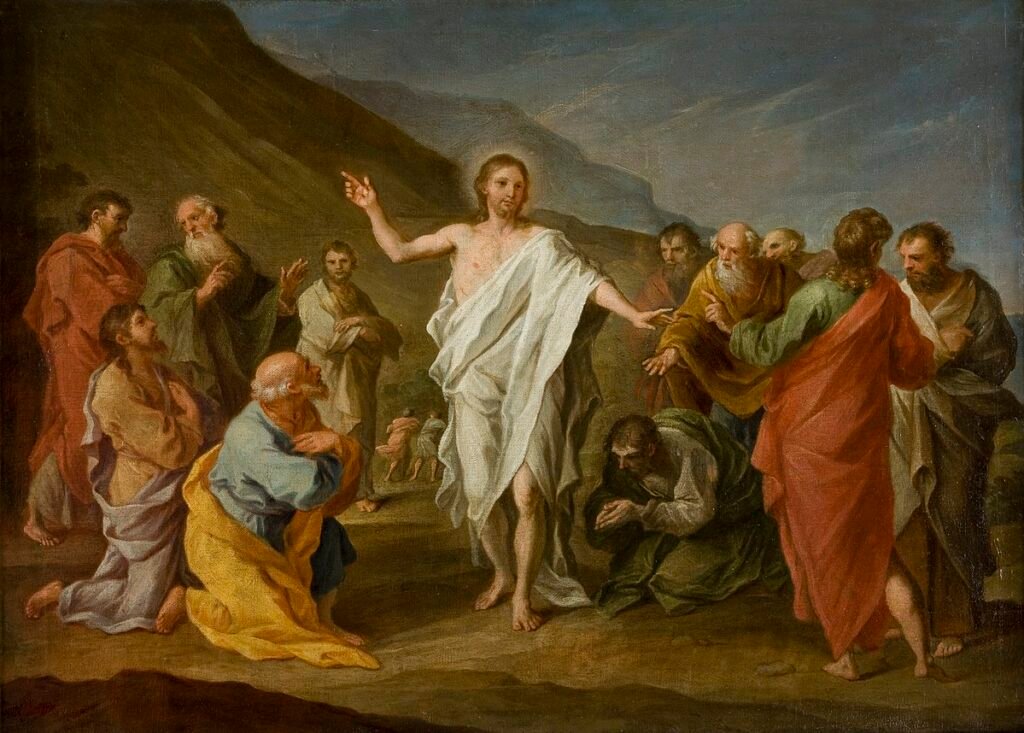
Two of His disciples, Cleophas and his fellow traveler, looked upon the cause of Jesus as altogether lost (Luke 24:13-32). That we are not exaggerating this weakness of faith is evident from the rebukes of our risen Savior Himself to the eleven and to the disciples on the road to Emmaus: “At length He appeared to the eleven as they were at table; and He upbraided them with their incredulity and hardness of heart, because they did not believe them who had seen Him after He was risen again” (Mark 16:14). “O foolish, and slow of heart, to believe in all things which the prophets have spoken” (Luke 24:25).
In Mary Alone, Who Believed Firmly, Was the Deposit of Faith Preserved
Out of this whole incredulous group, there was one whose faith had never for a moment faltered: the Blessed Virgin Mary. In Mary alone was the Faith of Christianity preserved whole and entire during those thirty-five hours between the Burial of Jesus and His Resurrection. She it was who alone retained her faith in Christ unmixed with doubt. And because the majority of the time transpiring during that lonely triduum of abandonment was the twenty-four hours of Christianity’s first Holy Saturday, every Sabbath since has been known as “Our Lady’s Day.”
Why are Saturdays Dedicated Especially to Mary?
The practice of Christianity in consecrating every Saturday to Our Lady is one of the favorite interpretations of many Doctors of the Church. From various available quotations we select the following three:
- St. Thomas Aquinas (Opus. 4, de 3tio Praec. Decalogi): “We observe each Sabbath day in veneration of the Glorious Virgin, whose faith remained entire that day upon the death of Christ.”
- St. Bernard (De Passione Domini, c. 2): “Mary, who is blessed among women, alone remained during that mournful Sabbath steadfast in faith, and thus the Church was preserved in her alone. For this reason, the whole Church most fitly is accustomed to celebrate each Sabbath day all year round in showing praise and glory to this Most Blessed Virgin.”
- St. Bonaventure (In Officio de Compassione B. Mariae, vol. 6): “In the time of the Passion of the Lord, when the rest of the early Church failed in its faith, Our Lady alone stood firm in her faith.”
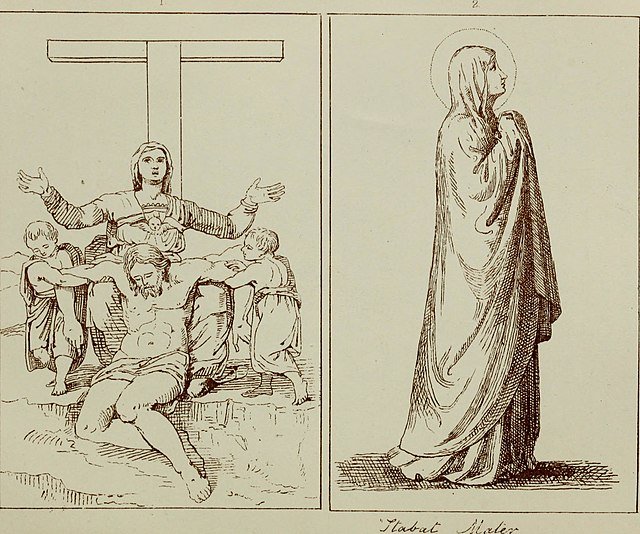
This historic loyalty of our Blessed Lady, which we believe is the prime motivation of Holy Mother Church in making every Saturday Our Lady’s Day, has another fitness arising out of the Sacred Passion of Jesus; that is, Saturday had been the Holy Day of the Old Law. But when God’s chosen people rejected His Divine Son, the Saturday worship of the Jewish nation was not carried over into the New Law. The very priests of its liturgy had plotted His death, the multitudes had howled for His Blood in Jerusalem, and Mary’s native land incurred a curse which was to her a deep and bitter grief.
She saw all the glories of her nation’s past history, from the Exodus to the Machabees; saw the tombs of the saints and prophets among the hills. Her land had what no other land contained: the golden light of God’s mysterious choice. It had been the earthly home of heavenly truth; the first to convert, the first to civilize. But now the cold darkness of apostasy from her Divine Son had settled upon it, and the brilliant Sunday of the Resurrection would override the holy Sabbath of the glorious past. It was then that Saturday was consecrated to Mary. It was given into the keeping of her who is the greatest of the daughters of Israel.
The Great Faith of the Blessed Virgin Did Not Necessitate Her Presence at the Sepulchre on that First Easter Morning
In our opinion, therefore, Our Lady did not accompany the holy women when they went early to the sepulchre that first Easter morn. To her the angel would not say, “Why seek you the living among the dead?” For she knew that Christ had already risen. The Bible tells us what happened before the holy women arrived at the sepulcher:
“And behold there was a great earthquake. For an angel of the Lord descended from heaven, and coming, rolled back the stone, and sat upon it. And his countenance was as lightning, and his raiment as snow. And for fear of him, the guards were struck with terror and became as dead men. And the angel answering, said to the women: ‘Fear not you; for I know that you seek Jesus Who was crucified. He is not here, for He is risen, as He said. Come and see the place where the Lord was laid. And going quickly, tell ye His disciples that He is risen. And behold He will go before you into Galilee; there you shall see Him. Lo, I have foretold it to you.’ And they went out quickly from the sepulcher with fear and great joy, running to tell His disciples. And behold Jesus met them, saying: ‘All hail.’ But they came up and took hold of His feet and adored Him. Then Jesus said to them: ‘Fear not. Go, tell My brethren that they go into Galilee. There they shall see Me.’ Who when they were departed, behold, some of the guards came into the city and told the chief priests all things that had been done. And they being assembled together with the ancients, taking counsel, gave a great sum of money to the soldiers, saying: ‘Say you, His disciples came by night, and stole him away when we were asleep.’ And if the governor shall hear of this, we will persuade him and secure you. So they taking the money, did as they were taught: and this word was spread abroad among the Jews even unto this day” (Matt. 28:2-15).
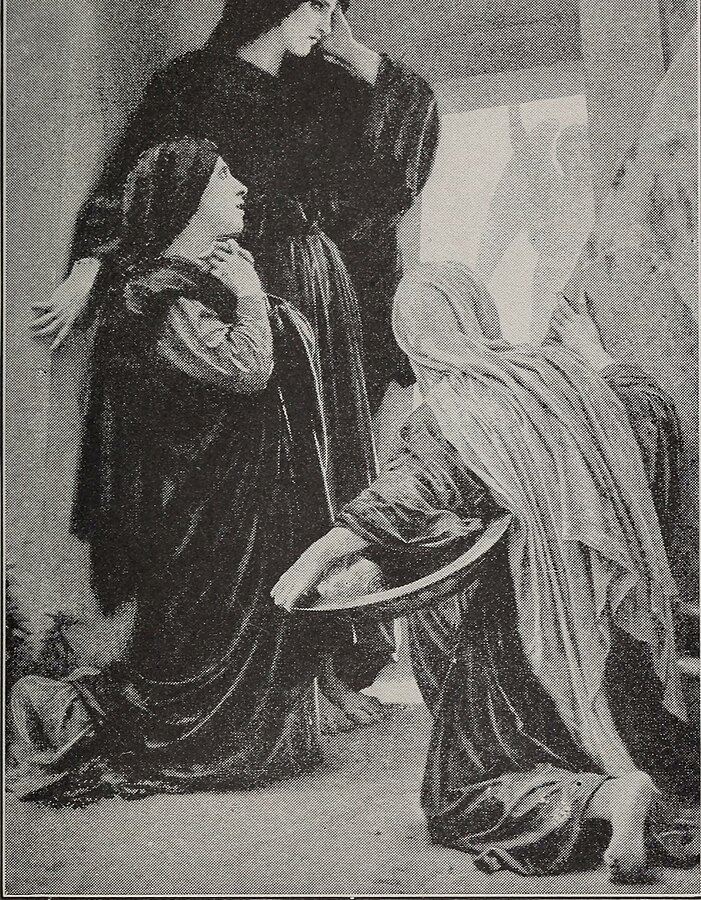
Thus, the pious Galilean women found the Roman guards replaced by a resplendent angel, the seal of the Empire broken, and the great stone rolled back. They entered with fear into the tomb and were astonished at the sight of the empty winding sheet and the bands perfumed with myrrh. Then the angel, with possibly a bit of heavenly sarcasm, said to them: “He is risen… as He said.” It is as though the angel had said, “Why are you so surprised? Didn’t He tell you countless times that He would rise again on the third day?”
Christ’s Filial Love for Mary Caused Her to be the First Witness of His Resurrection
The Bible makes no mention of the Risen Christ’s appearing to Mary on that first Easter morning. It is a most ancient tradition of Christianity, however, that His first appearance was to His Blessed Mother — the one who had the greatest right to see Him. St. Ambrose, who lived in the 4th century, says that the Virgin was the first who had the happiness to see her Son risen. The poet Sedulius, who flourished shortly after St. Ambrose, records the same tradition in his verses. They both speak of it as the unanimous belief of the early Christians.
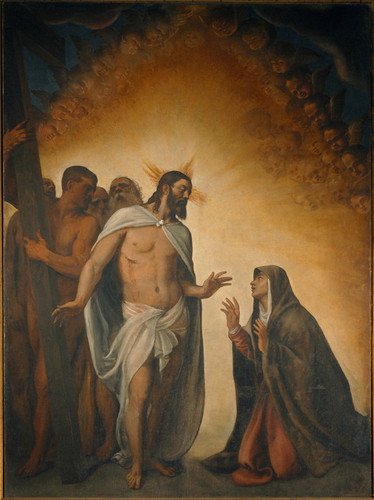
Classical, too, is the statement of St. Ignatius, founder of the Jesuits, who wrote in his famed Spiritual Exercises: “Jesus appeared to the Virgin Mary first; and although this is not mentioned in Scripture, still it is considered as mentioned when it says that He appeared to many others — for the Scripture supposes us to have understanding, according as it is written, ‘Are you also without understanding?’”
There is another tradition, quite old in itself (especially in Italy and Ireland), that during the forty days between the Resurrection and the Ascension, Our Lord lived once more, as of old, with His Immaculate Mother, and from her house appeared to Magdalene, Peter, and the rest.
The Silence of Holy Scripture Regarding the Risen Christ’s Appearance to Mary
Why is the Bible silent about this first apparition of the risen Christ? There are many plausible explanations. One is found in the Bible itself: “There are also many other things which Jesus did; which, if they were written every one, the world itself, I think, would not be able to contain the books that should be written” (John 21:25).
Another explanation is this: much, if not all, of Mary’s Biblical life was revealed to the Evangelists by Mary herself. Apparently, she did not reveal this to either St. John or St. Luke. Perhaps it was too dazzling, too intimate; perhaps it was one of those experiences one hesitates to disclose and knows not how to describe.
Why Easter is the Occasion of True Joy
The Church calls Easter “the Solemnity of Solemnities.” The most prominent word in its Easter Liturgy is “Alleluia” — the song of joy sung by the angels before the throne of God in heaven. Joy is the overflow of hope, and Christ brought hope into the world. So true is this that you find no real joy anywhere except in Christianity. You will find other good things in life, of course, such as nobility, beauty, courage, and love of truth. All these exist in pagan societies at their best. But you do not find joy. Joy is the peculiar mark of Christianity, for where Christ is, there is joy.
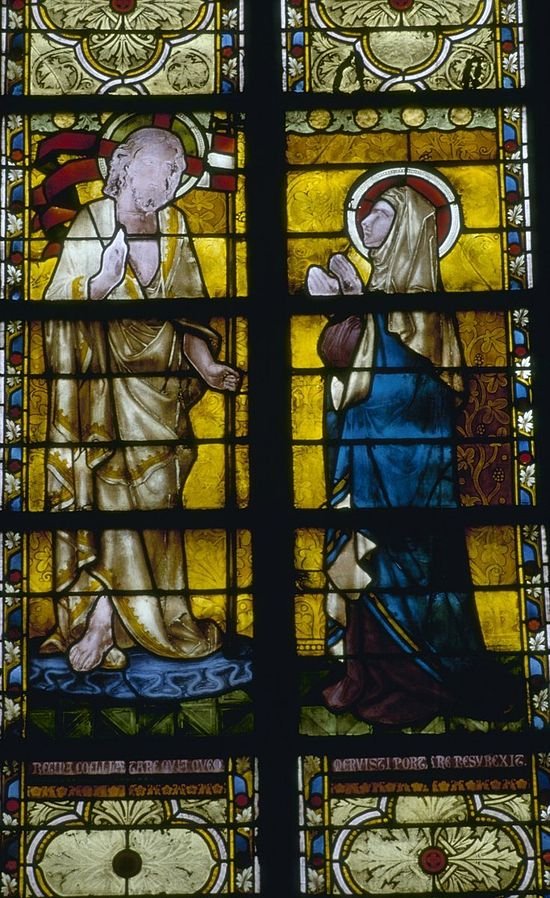
And where is Christ? Wherever Mary is. She brought Christ, our Joy, into this world. For that very reason, endless centuries of Christianity have saluted her as “Cause of Our Joy.” It is for this same reason that the predominant prayer of the Christian Easter Liturgy is the joyous Regina Coeli Laetare, Alleluia — “O Queen of Heaven, rejoice! Alleluia!”
–Taken from the Reign of Mary Quarterly Magazine, Issue 167
